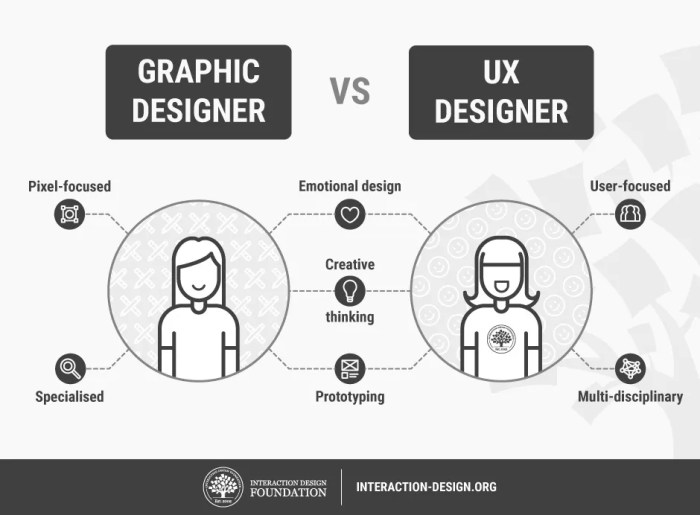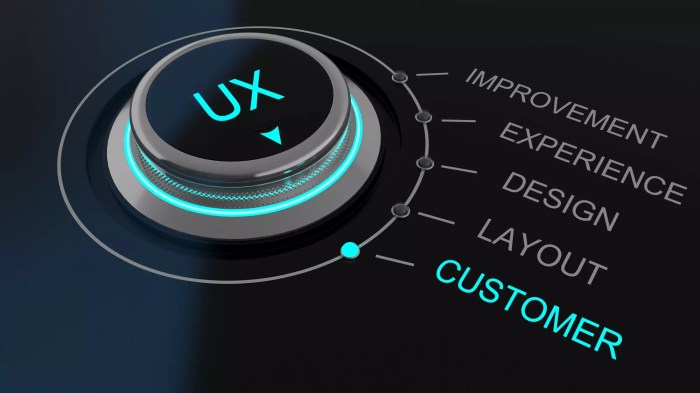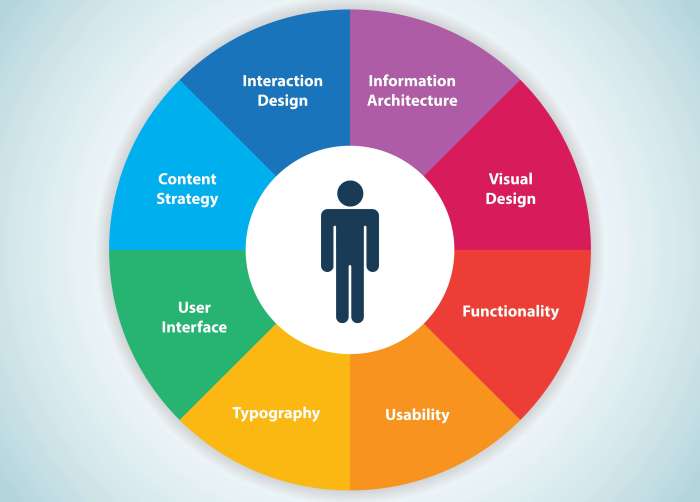Crafting Exceptional User Experience Design: A Comprehensive Guide
Embark on a journey into the realm of user experience design, where every click, scroll, and interaction matters. Learn how this crucial aspect shapes the digital world we navigate daily.
Delve deeper into the core principles and practices that define user experience design and discover its impact on creating seamless, user-centric products.
Introduction to User Experience Design
User Experience Design refers to the process of enhancing user satisfaction by improving the usability, accessibility, and pleasure provided in the interaction between the user and a product. It plays a crucial role in product development as it focuses on creating products that meet the needs and preferences of the users, ultimately leading to increased customer satisfaction and loyalty.
Role of User Experience Design in Creating User-Centric Products
User Experience Design ensures that products are designed with the end user in mind, taking into consideration their behaviors, motivations, and goals. By understanding the user's perspective, designers can create intuitive interfaces, smooth interactions, and seamless experiences that resonate with the users.
This user-centric approach not only improves the usability of the product but also enhances the overall user satisfaction and engagement.
- Apple's iPhone: The iPhone revolutionized the smartphone industry with its user-friendly interface, intuitive gestures, and seamless user experience. Its design focused on simplicity and elegance, making it easy for users to navigate and interact with the device.
- Google Search: Google's search engine is known for its simple and clean design that prioritizes user experience. The search results are relevant and displayed in a user-friendly format, allowing users to find information quickly and efficiently.
- Amazon: Amazon's website and app are designed with the user in mind, providing a personalized shopping experience tailored to individual preferences. The easy navigation, product recommendations, and hassle-free checkout process contribute to a positive user experience.
Principles of User Experience Design

User Experience Design is guided by several key principles that ensure the product or service meets the needs of the users effectively. These principles include usability, accessibility, and desirability.Usability is essential in User Experience Design as it focuses on how easy and efficient it is for users to achieve their goals when interacting with a product or service.
A user-friendly interface, intuitive navigation, and clear instructions are crucial aspects of usability.Accessibility is another important principle that ensures that all users, including those with disabilities, can access and use the product or service. Designing with accessibility in mind not only broadens the reach of the product but also reflects inclusivity and diversity.Desirability is the principle that focuses on creating a product or service that users not only find functional but also visually appealing and emotionally engaging.
Aesthetics, branding, and emotional design play a significant role in making a product desirable to users.
User Research in Design Process
User research plays a vital role in informing the design process by providing valuable insights into the needs, preferences, and behaviors of the target users. Through techniques such as interviews, surveys, and usability testing, designers can gather data to understand user motivations and pain points.By conducting user research, designers can identify patterns and trends that help them make informed decisions during the design process.
Understanding the user's context, goals, and expectations allows designers to create solutions that meet user needs effectively.
User Personas Influence on Design Decisions
User personas are fictional representations of the target users based on real data and research. These personas help designers empathize with users and make design decisions that align with user goals and behaviors.By creating user personas, designers can personalize the user experience and tailor the design to meet specific user needs.
User personas guide design choices related to features, content, and interactions, ensuring that the final product resonates with the target audience.
User Interface Design
User Interface Design focuses on the visual and interactive elements of a product or service that users interact with. It is a subset of User Experience Design, which encompasses all aspects of the user's experience.
Differentiate between user experience design and user interface design
User Interface Design specifically deals with the look and feel of the product, including elements like buttons, menus, and navigation. On the other hand, User Experience Design considers the overall experience of the user, including usability, accessibility, and overall satisfaction.
Elements of a good user interface design
- Clear and intuitive navigation: Users should be able to easily find what they are looking for.
- Consistent design: Elements should be consistent across the interface to provide a cohesive experience.
- Feedback mechanisms: Users should receive feedback when performing actions to know if they were successful.
- Visual hierarchy: Important elements should stand out and be easily distinguishable.
- Accessibility: Design should be inclusive and accessible to users of all abilities.
Examples of effective user interface designs and their impact on user experience
One great example of effective user interface design is the interface of the Apple iPhone. The simple and intuitive design makes it easy for users to navigate and interact with the device, leading to a positive user experience. Another example is the interface of Google's search engine, which is clean, minimalistic, and provides relevant results quickly, enhancing user satisfaction and usability.
Usability Testing

Usability testing plays a crucial role in user experience design as it helps to identify issues, gather feedback, and improve the overall usability of a product or website. By observing real users interacting with the design, designers can pinpoint areas of improvement and make informed decisions based on user behavior.
Methods of Conducting Usability Tests
- Remote Usability Testing: Conducted online with participants from different locations, providing flexibility and a diverse pool of users.
- Lab Usability Testing: Participants interact with the design in a controlled environment, allowing for more detailed observations and feedback.
- Prototype Testing: Testing early-stage prototypes to gather feedback and make necessary adjustments before finalizing the design.
- Think-Aloud Testing: Participants verbalize their thoughts and actions while navigating the design, providing insights into their decision-making process.
Feedback from Usability Testing
Usability testing feedback can greatly enhance the overall user experience by highlighting pain points, areas of confusion, and opportunities for improvement. Designers can use this feedback to iterate on the design, enhance usability, and create a more intuitive and user-friendly product or website.
Mobile User Experience Design
Mobile user experience design involves unique considerations due to the smaller screen size and touch-based interactions of mobile devices. It is crucial to optimize the user interface and interaction design to ensure a seamless and intuitive experience for users on mobile platforms.Responsive design plays a significant role in mobile user experience by enabling websites and applications to adapt to different screen sizes and orientations.
This ensures that content is displayed appropriately and that users can easily navigate and interact with the interface regardless of the device they are using.
Examples of Mobile Apps with Exceptional User Experience Design
- Instagram: The app offers a clean and visually appealing interface, making it easy for users to browse, post, and engage with content.
- Google Maps: Google Maps provides a user-friendly experience with intuitive navigation features and real-time updates, enhancing the overall user experience.
- Uber: Uber's app simplifies the process of booking a ride through a streamlined interface and clear calls to action, focusing on usability and convenience.
Summary

In conclusion, user experience design is not just about aesthetics; it's about creating meaningful interactions that leave a lasting impression. As technology evolves, so too must our approach to crafting exceptional user experiences.
Popular Questions
What is the difference between user experience design and user interface design?
User experience design focuses on the overall experience a user has with a product, while user interface design deals with the specific layout and design of the product's interface.
How does user research impact the design process in user experience design?
User research helps designers understand user behaviors, needs, and preferences, allowing them to create products that meet those requirements effectively.
Why is usability testing important in user experience design?
Usability testing helps identify issues and areas of improvement in a product's design, ensuring a seamless and intuitive user experience.




